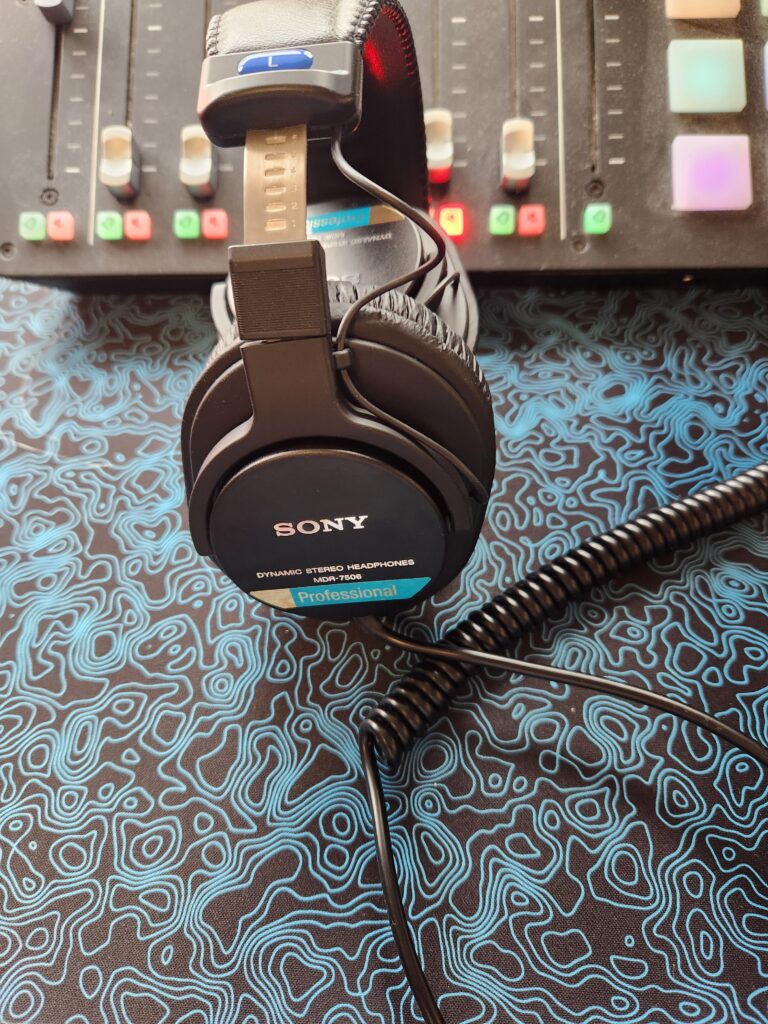Audio Editing Audiobook

You know how it feels when teacher hands back a paper, and the red ink outweighs the black ink? Oh, maybe you were a better student than I? Decades later I get to look at the objective evaluations of my own work. Editors, coworkers, and now editors on the audiobook. It feels different today, looking at the red marks. I don’t cringe. I study.
I did that! I did a thing. I wrote a novel that is being published. Then I recorded the audio for the audiobook. That’s a thing. We sent the manuscript plus the audio to a professional audio quality person. I’d call that person an editor. Editors, like teachers, take nice black-and-white documents then mark it in red ink.

I recorded nearly 11 hours of audio. It is work! I needed to bring the audio to life. I needed to differentiate the characters and their voices. I had to dig out the Boston accent I was born with and the Irish accent common in my family’s homes. I did that. I sat in a chair with a big microphone and a cool board that made look like a pro. I read the book end-to-end adding inflection, accent, voice characterizations.
I bundled it up for the audio editor. My work was perfect. That’s a lie. I knew it was not perfect. But as an author reading her own novel, I slip into a different slot than professional voice-over actors doing the work. My objective wasn’t “perfect” but something lower: “no spinach in the teeth and no toilet paper on the shoe heel.” Ok, a lot lower than perfect.
One
I learned several things about myself. First, as I wrote in “Different is Good”, I apparently failed to read every word perfectly. Dyslexic author reads her own work and boo-boos a bit on the script.
Two
The second lesson involved using new headsets. Whilst loving my Bose noise-reduction headsets, they lied to me. The headsets include an active process to reduce noise. The audio engineer suggested I buy a professional set of over-the-ear “cans” to listen through. Well, didn’t that change my ability to hear ticks, hums, whistles, and other junk on the tape.

Three
The third lesson came from memory flash of me stepping up into a van/bus/RV at my elementary school. I forgot about that beige bus that had speech and language lab in it. I had a lisp. I also seemed to whistle on a few “S” sounds. Don’t worry I got that fixed. All cured. Until, of course, the audio got professionally reviewed.
I pronounced lapsed wrong. It was lisp-y. And if it wasn’t lisp-y, then it whistled.

It sat on my ‘quiet’ stool in my quiet pajamas at my desk with new neoprene pads that muffle sound. I recorded the six instances of “lapse” over and over. I’d change the position of my tongue, cheeks, and lips. If I could have moved my teeth, I would have. I tried and I tried. Then I air-brushed the whistle out. I know a cheat.

The third lesson is never to use the word “lapse”! What a dumb word. Who’d invent a word that can’t be said without either a lisp or a whistle. I’ve decided to fire the word. Give it the three-finger point: “You’re fired.”
Four
“It is just work.” The forth lesson is that it is just work. Turn the discipline knob up to 8. Turn the whining knob down to 1 and just do the mother-lovin’ work.
Given that I just re-recorded chapter 1 of book 2 ‘Stolen Mountain’, after doing the audio edits for 19 chapters of The Little Ambulance War of Winchester County, I acknowledge that the work is exhausting.
Sit still! Every wiggle makes a sound. Wiggle then re-record.
- Be quiet! Wear silent clothing. That metal zipper tab ticks on the tape. So does the mouse when advancing text down the screen. My desk is metal and glass. Who knew that they were so noisy? Well, the audio editor did. Dress like we did during the pandemic. No snaps, buckets, zips. Pajamas!
- Sit upright with good posture. That f-n mic hears all, sees all, forgives nothing. I can hear the difference in my own voice with a slouch. The distance to the mic changed. If I want consistent sound, then everything must be the same every time. I did move the mic stand four feet, a long meter, from my left to my right, from my bay window to a flat plaster wall. I would be more efficient for me. I heard the difference. Don’t record facing a hard wall and right-angles.
- Oh, and this office chair that is actually comfortable under my backside, makes noise. The mic loves recording ticks and squeaks. Sit on a stool with no moving parts.
- And don’t wear slippers. The mic hears slippers rubbing on the floor. In fact, don’t move your feet.
- Please don’t crack your knuckles when reading either. Sit still!
- These lessons come with an instant feedback loop. Mess up? re-do!
240 total fixes. When you finish the work, the work is done. It is finished. On the timeline of life, it is behind you. It was just work.
Five
There is a fifth lesson. Work with good people who know the process and expect the best. Why do the work if you can’t make it good. Go for it. The difference between crap and good is often 240 tiny tasks that take time and effort. That’s what I keep telling myself.